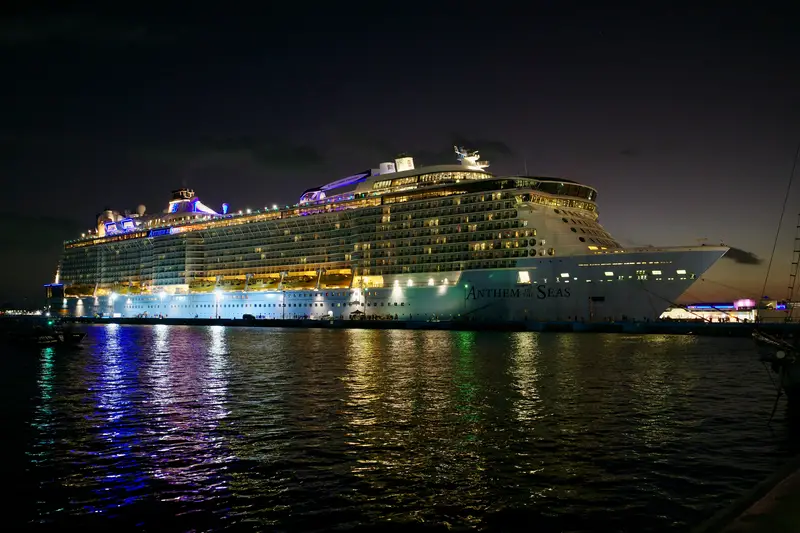Cruise ships promise amazing food experiences with endless buffets and 24-hour dining options. But passengers are sharing stories about hidden risks that cruise lines never mention in their brochures. From soggy bacon sitting under heat lamps for hours to scrambled eggs made from mysterious powder, the reality of cruise buffets can be pretty different from what people expect. These aren’t just minor disappointments – they’re real food safety concerns that can ruin vacation days.
Bacon sits under heat lamps way too long
Most cruise passengers head straight to the buffet bacon without realizing what they’re actually getting. The bacon sitting out on warming trays has often been there for hours, becoming limp, greasy, or barely cooked. Passengers consistently warn about this “nasty bacon” that looks nothing like the crispy strips people expect. The heat lamps that keep food warm actually make bacon worse over time, creating a soggy mess that many passengers describe as inedible.
The good news is that most cruise ships keep properly cooked, crispy bacon behind the counter. Staff members can provide fresh bacon when passengers specifically ask for it, but they rarely offer this option automatically. Smart passengers have learned to request “crispy cooked bacon” directly from servers instead of taking whatever sits on the buffet line. This simple trick can make the difference between starting the day with disappointing food or actually enjoying breakfast. Some experienced cruisers even mention that bacon cooking tools at home work better than cruise buffets.
Scrambled eggs come from powder most of the time
Those fluffy yellow scrambled eggs on cruise buffets aren’t what they seem. Many cruise ships use powdered eggs for their buffet displays, which results in a weird texture and taste that passengers often describe as “disgusting.” The powdered eggs also tend to be too wet or have an artificial appearance that immediately signals something’s wrong. Unlike fresh eggs cooked to order, these pre-made scrambled eggs can sit out for extended periods, making the texture even worse as time passes.
The solution is surprisingly simple but requires knowing where to look. Most cruise ships have omelet stations where staff cook fresh eggs to order using real ingredients instead of powder. Passengers can request “dry scrambled eggs” at these stations and add cheese, tomato, or ham for a much better breakfast experience. The staff at omelet stations are usually happy to accommodate special requests, and the difference in taste and texture is immediately obvious. This option exists on almost every major cruise line, but passengers need to specifically seek it out rather than settling for buffet options.
Heat lamp foods lose quality fast
French fries, pizza slices, and hot dogs under heat lamps become completely different foods after sitting out for hours. The fries turn soggy and stale, pizza loses its crispy crust, and hot dogs develop an unappetizing texture that bears little resemblance to freshly cooked versions. Heat lamps are designed to keep food warm, but they actually continue cooking items slowly, which breaks down textures and makes everything taste like it’s been reheated multiple times.
Passengers who know this secret always check if grills or other cooking stations are open before settling for heat lamp food. Fresh fries from sandwich stations taste completely different from the soggy ones sitting under warming lights. The same applies to pizza from specialty restaurants versus buffet slices that have been sitting out. Some creative passengers even combine fresh items from different stations – like getting fresh fries from the grill area and adding cheese from the buffet. Warming trays work differently at home, but cruise ship heat lamps are much more intense and damaging to food quality.
Better food stays hidden behind counters
Cruise ships deliberately keep their highest quality food items away from the main buffet displays. The really good bacon, fresh eggs, and properly cooked items are stored behind service counters where staff control portions and presentation. This isn’t necessarily about being cheap – it’s about managing food costs and ensuring popular items don’t disappear too quickly. But passengers who don’t know about this system end up eating lower-quality food while better options sit just a few feet away.
Learning to ask for specific items can completely change the cruise dining experience. Staff members are usually willing to provide fresh alternatives when passengers make direct requests, but they rarely volunteer this information. One passenger mentioned successfully requesting plain yogurt every morning, with servers ensuring fresh bowls each day instead of the regular buffet containers. The key is being specific about what’s wanted – asking for “fresh” or “crispy” versions of menu items signals that passengers know better options exist.
Breakfast sausage quality disappoints most passengers
Cruise ship breakfast sausages consistently receive complaints for being tough, overly processed, or having a strange “beefish” taste that doesn’t resemble regular pork sausage. These sausages often sit under heat lamps alongside the problematic bacon, which makes their texture even worse over time. The pre-cooked sausages used on many cruise ships are designed for mass preparation rather than taste, resulting in a product that many passengers find completely unappetizing after the first bite.
Unlike bacon and eggs, there aren’t usually fresh sausage alternatives available on most cruise ships. However, passengers can often find better breakfast meat options at specialty restaurants or room service menus. Some cruise lines offer turkey sausage or chicken alternatives that taste fresher than the standard pork options. The best strategy is trying different breakfast venues throughout the cruise to find which locations prepare sausage properly, rather than assuming all breakfast meats will taste the same across different dining areas.
Biscuits rarely meet passenger expectations
Cruise ship biscuits are another breakfast item that consistently disappoints passengers who expect fluffy, buttery bread but instead get dense, dry substitutes. These biscuits are often pre-made in large batches and reheated throughout the day, which removes any light, flaky texture that makes good biscuits appealing. The mass production process used on cruise ships simply can’t replicate the individual attention that proper biscuit-making requires, leaving passengers with bread that’s more like a dense roll than an actual biscuit.
The solution for biscuit lovers is seeking out fresh bread options from other areas of the ship. Many cruise ships have bakeries that produce fresh rolls, croissants, and pastries throughout the day. These items are usually much higher quality than buffet biscuits because they’re made in smaller batches with more attention to texture and taste. Passengers can also check if any restaurants offer made-to-order biscuits or similar bread items that aren’t sitting under heat lamps. Biscuit mixes at home often produce better results than cruise ship versions.
Hygiene concerns around buffet areas
Beyond food quality issues, cruise buffets present hygiene challenges that many passengers notice but don’t expect. Other guests coughing, sneezing, or handling serving utensils without washing hands creates contamination risks around open food displays. The high volume of people moving through buffet areas makes it difficult to maintain the same cleanliness standards as individual restaurant service. Food sitting in open containers for hours also provides more opportunities for contamination than items prepared and served immediately.
Passengers can reduce these risks by eating at off-peak times when fewer people are around buffet areas, or choosing restaurants with individual service instead of self-serve options. Many cruise ships have casual dining venues that prepare food to order without the buffet format, providing better food safety conditions. Observing how long food has been sitting out and avoiding items that look like they’ve been there for extended periods also helps minimize potential problems. The goal isn’t avoiding cruise food entirely, but making smarter choices about when and where to eat.
Cruise ships offer amazing vacation experiences, but knowing about these hidden food and safety risks helps passengers make better decisions. The key is asking for fresh alternatives, avoiding heat lamp foods, and staying aware of potential security situations. These aren’t reasons to skip cruising – they’re just insider knowledge that makes the experience much better for everyone involved.

